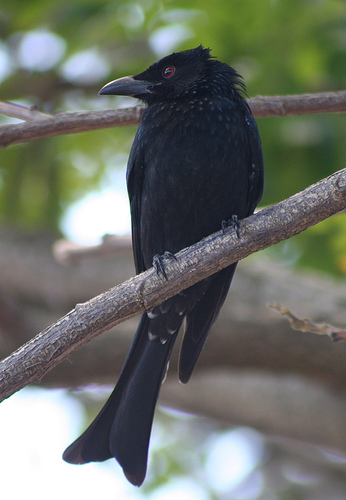Facts About Drongo
Drongos, belonging to the family Dicruridae, are a striking group of birds known for their black or dark grey plumage and distinctive forked tails. Found across the tropical regions of the Old World, these birds are adept insect hunters and skilled mimics, often using a variety of alarm calls to warn other animals of potential dangers. Interestingly, some drongos have been observed using deceptive alarm calls to scare other animals away from food, which they subsequently consume themselves.
Within the classification system, the genus Dicrurus encompasses all 29 species in this family. The term "drongo" originates from the indigenous language of Madagascar but is now universally used to describe all birds within this family. Historically, there were two recognized genera in this family, but recent research has consolidated them into a single genus: Dicrurus. It is believed that drongos originated in the Indo-Malayan region, eventually spreading to Africa and Australasia.
Drongos exhibit several distinctive traits: they primarily consume insects, display metallic-colored feathers, possess long forked tails, and maintain an upright posture while perching. They are notably aggressive in defending their nests and young. Another remarkable feature is their ability to mimic the calls of other species, including both birds and mammals. They employ this mimicry for various purposes, such as deterring predators or deceiving other animals to obtain food.
On a lighter note, in Australian English, the term "drongo" is a playful insult meaning "idiot" or "fool." This slang originated from an Australian racehorse named Drongo in the 1920s, which failed to win any race despite numerous attempts. Over time, calling someone a "drongo" became a common, informal way to tease friends.

 Malaysia
Malaysia